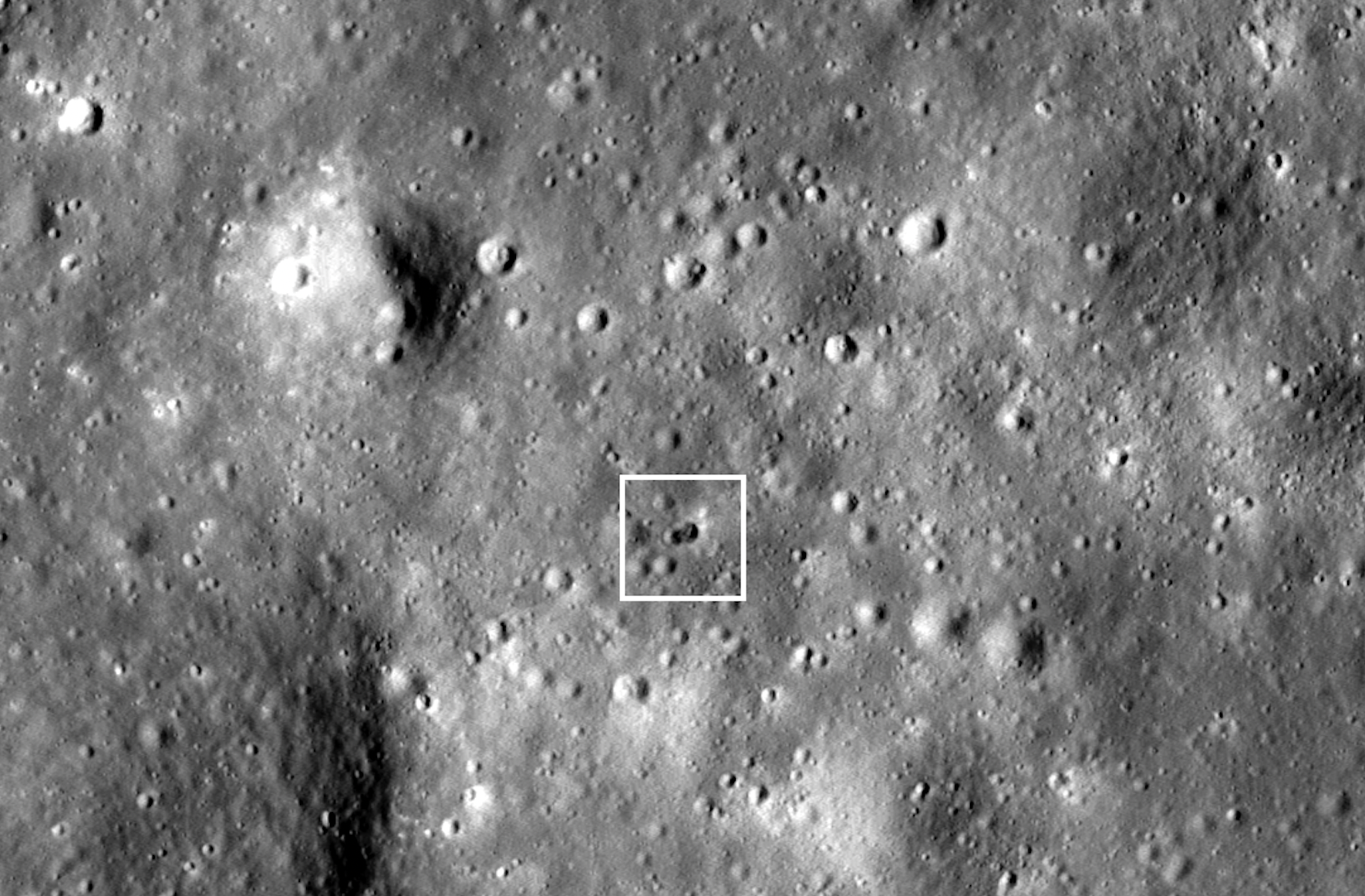‘Mystery’ double crater of unknown rocket found on the moon
Nasa says crater of this kind has never been seen in previous rocket body impacts

Nasa has spotted the crash site of a mystery “out of control” rocket that slammed into the far side of the moon earlier this year in March.
Images taken by the American space agency’s Lunar Reconnaissance Orbiter (LRO) on 25 May revealed a double crater formed by the rocket’s impact.
While the identity of the rocket body remains “unclear”, Nasa revealed last week that the crater is actually “two craters” – one, an eastern crater about 18m in diameter that is superimposed on a western 16m diameter crater.
The new findings, according to Mark Robinson, principal investigator of the LRO Camera team, may indicate that the rocket body that slammed onto the lunar surface could have had large masses at each end.
“Typically a spent rocket has mass concentrated at the motor end; the rest of the rocket stage mainly consists of an empty fuel tank. Since the origin of the rocket body remains uncertain, the double nature of the crater may help to indicate its identity,” Dr Robinson said.
Researchers say a typical used rocket has its mass mostly concentrated at the motor end while the rest of the rocket stage mainly consists of an empty fuel tank.
With the rocket body’s origin remaining uncertain, they say the newly discovered double nature of the crater may help trace its identity.
“No other rocket body impacts on the Moon created double craters,” Nasa noted in a blog post.
Some space experts say if the impact had happened at a shallow angle, it may have created such a double crater.
Initially the object – which travelled through space at almost 60,000mph – was suspected to be a SpaceX Falcon 9 rocket booster.
But scientists led by Vishnu Reddy from the University of Arizona in the US, who were closely monitoring the spent rocket’s rotation and light reflection, suggested it may be of Chinese origin.
They said the space junk may have been the booster part of a rocket that launched the Chinese spacecraft Chang’e 5-T1 towards the moon in 2014, but the country has denied it.
While there have been several instances in the past of debris colliding onto the lunar surface, including the Soviet Union’s Luna 2 in 1959, experts had said the out of control rocket’s collision was the first by space junk zipping around in space.
Join our commenting forum
Join thought-provoking conversations, follow other Independent readers and see their replies
Comments
Bookmark popover
Removed from bookmarks